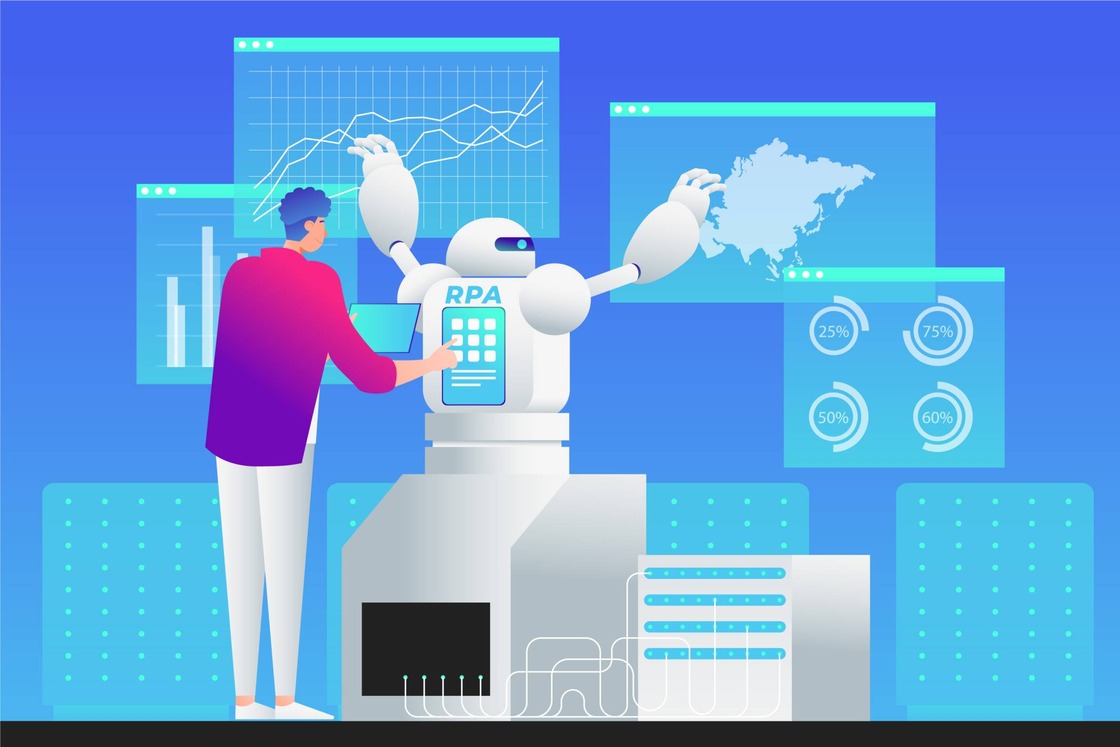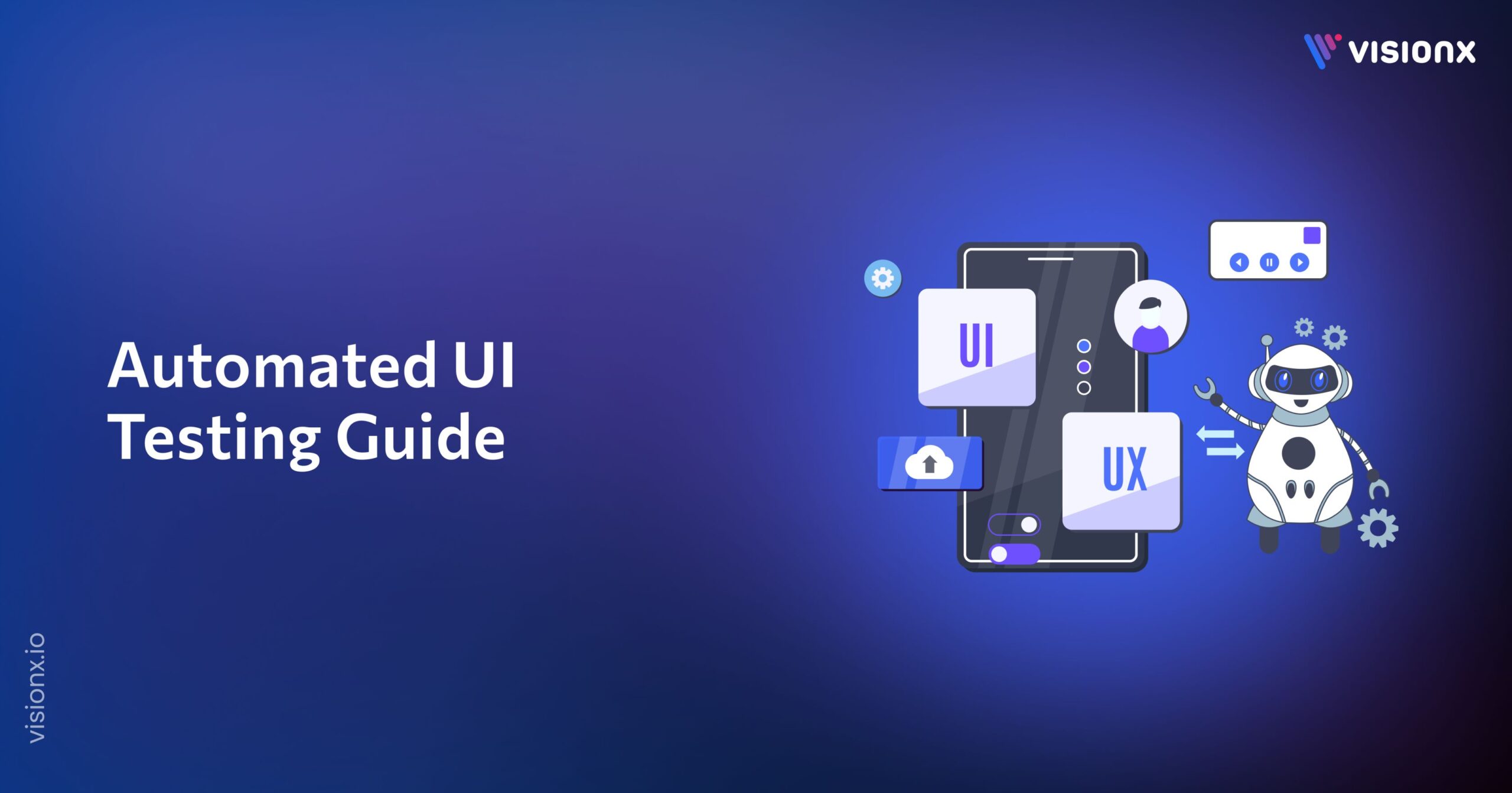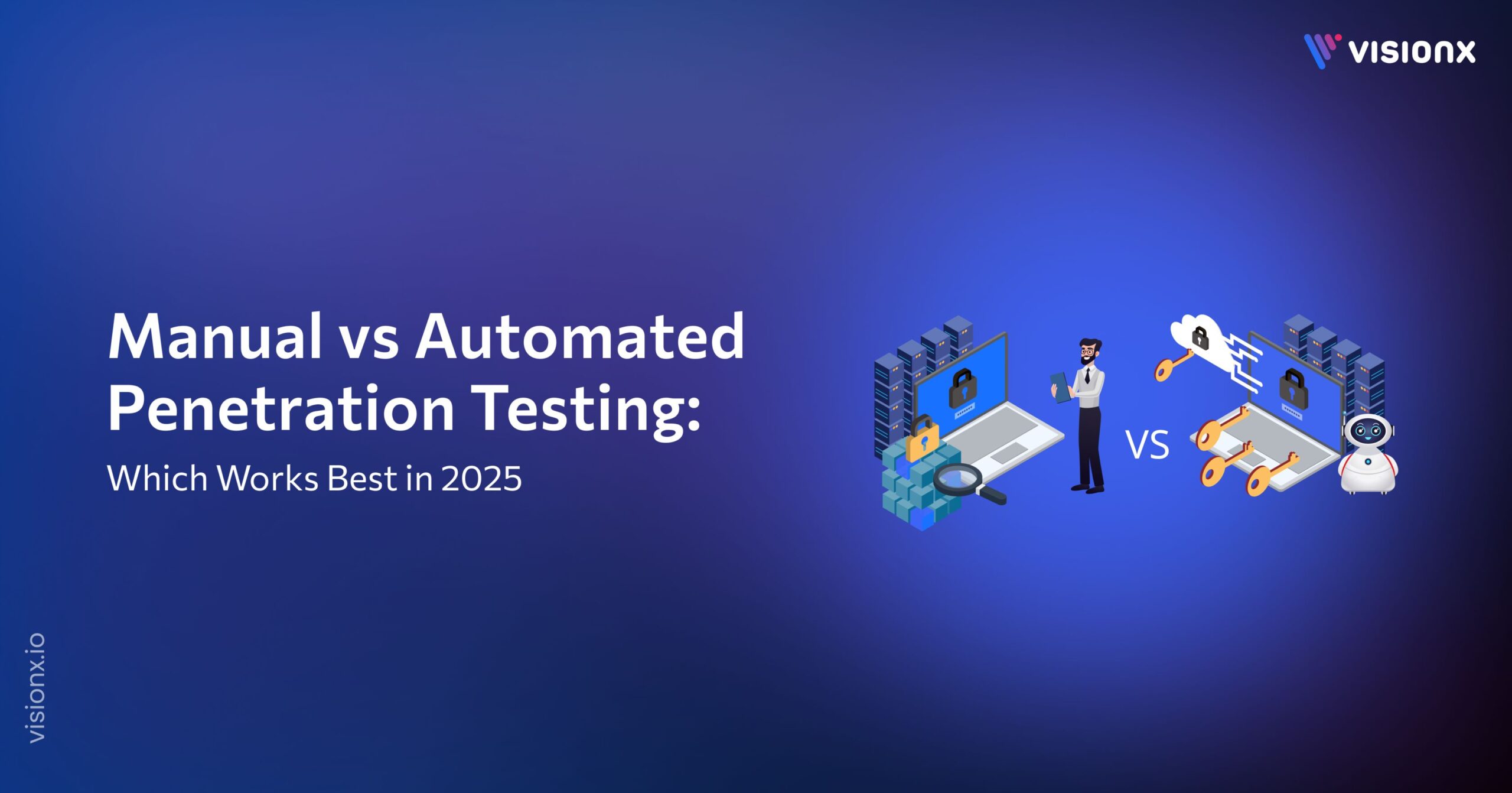As technology is advancing, we are always looking for better ways to test our apps. The usual methods sometimes need help to keep up with today’s fast-changing apps. But now, we have a new tool: machine learning (ML). It’s changing how we test Android apps. In this blog, we’ll talk about self-healing Android automation testing, made better and more reliable with machine learning (ML).
What is Android Automation Testing?
Android Automation Testing refers to the process of using automated tools to execute your test case suite on Android applications. The main goal of automation testing is to increase test efficiency and develop software value by reducing the time required to run repetitive tests. This allows human testers to focus on more complex tasks that require human judgment and cannot be automated.
Android Automation Testing With Machine Learning
Machine learning has changed many areas, and software testing is no different. Android automation tests learn from past results, find patterns, and adjust to changes. This makes self-healing tests more robust and less reliant on manual fixes.
Machine learning can study how tests run, spot success and failure patterns, and suggest using the Android app to get the right results. It adapts to UI changes, handles unexpected issues, and improves Android UI automation test efficiency while reducing mistakes.
Using machine learning development services in Android automation testing can expand test coverage, make tests more stable, and use resources better. As a result, it leads to better software quality and faster app releases.
Importance of Android Automation Testing
Let’s talk about why automated testing is becoming the better option in Android app development:
Saves Time and Money
As we know, manual testing can take a lot of time and costs. Automation test Android is faster and can be run many times, saving time and resources during development and upkeep.
Tests More Scenarios
With automation, developers can test various situations and tricky cases that are hard to do manually. This makes sure all the important stuff gets checked.
Quick Feedback
Automated tests give android developers instant feedback. They find problems early in the development process so that you can fix them right away.
Consistency and No Errors
Automated tests follow the same steps every time. This reduces the chance of human errors, making the testing process more reliable.
Challenges in Maintaining Android App Automation Testing
As Android apps get more significant, testing them becomes more complicated. Here are some significant challenges in keeping Android automated testing working:
Changing App Look
Android apps often change how they look. This can break automation tests that rely on specific app appearances.
Lots of Different Devices
Android comes in many sizes and shapes. Automation test Android needs to work on all of them, which can be tricky.
Unreliable Test Results
Sometimes, tests give different results for the same thing. This can happen because of network issues, slow devices, or other problems.
Tricky Test Data
Handling the test data can be challenging, especially in complex apps. It takes time and effort to get it right.
What Does Self-Healing Android Automation Test Mean?
Self-healing Android automation tests make app testing more stable. They adapt to changes and ensure accurate results as apps evolve. Traditional tests fail due to UI changes, updates, and device differences. Self-healing tests, powered by machine learning, learn from past data and adapt independently, ensuring app quality and dependability.
Benefits of Self-Healing Tests
- Less Work: Self-healing tests need less manual effort, saving time.
- Stable Testing: They adapt to changes, giving consistent results.
- Faster Testing: Creating and keeping them up is quicker because they adapt to UI changes.
- Comprehensive Coverage: They handle many scenarios, ensuring thorough testing.
- Reliable Results: They adapt to changing UI elements, reducing errors.
- Early Problem Detection: They find issues early, cutting costs in the development process.
Machine Learning and Self-Healing Android Automated Testing
Machine learning is the key to creating self-healing Android automation testing. It helps identify and adjust to changes in the app’s UI and behavior. Here’s how to use machine learning for self-healing tests:
Collect Data
Gather a dataset of UI element properties and expected behaviors, including UI hierarchy, element details, and interactions.
Train Models
Use machine learning techniques, like supervised or reinforcement learning, to teach models about expected UI element behavior. Models learn to spot UI changes and adapt.
Keep Learning
Design models that keep learning and adapting. They compare the current UI state with the expected one, spot differences, and make adjustments.
Handle Flakiness
Machine learning can reduce inconsistent test results (flakiness) by recognizing common issues and finding solutions. For example, it can tell real problems from temporary network glitches.
Manage Test Data
Machine learning helps manage test data by creating or changing it as needed, reducing manual data setup.
Building a Self-Healing Test Model
Creating a self-healing test model is important for making solid and adaptable automated tests for Android app development. Let’s examine the main parts and steps in building such a model.
Choosing the Right Machine Learning Framework
When creating a self-healing test model, it’s essential to pick the best machine learning framework for your project. Common options include:
- TensorFlow: A versatile open-source framework by Google, known for deep learning capabilities.
- PyTorch: An open-source framework by Facebook’s AI Research lab, valued for its adaptability.
- Scikit-learn: A user-friendly Python library suitable for various machine-learning tasks.
Crafting the Self-Healing Algorithm
Designing the self-healing algorithm is mandatory when making a self-healing test model. The features taken from UI elements, the choice of the suitable machine learning method, and the model’s design will decide how well it can adapt to changes and fix itself during testing.
Extracting Features from UI Elements
For a self-healing Android automation testing model, it’s vital to extract meaningful information from user interface (UI) elements. This data helps the model make decisions. Relevant features include text, position, and visibility attributes.
Choosing the Right Machine Learning Algorithm
The selection of the right machine learning algorithm depends on your test data and the complexity of the self-healing task:
- Decision Trees: Good for binary decisions and rule-based tasks.
- Neural Networks: Ideal for complex tasks like image recognition and language processing.
- Other Algorithms: Regression, clustering, or reinforcement learning could be considered based on the problem.
Designing the Model Architecture
Model architecture means the structure and layout of the machine learning model. It involves defining layers, nodes, and connections. Choose an architecture that fits your problem, such as a Convolutional Neural Network (CNN) for image-based UI element recognition or a Recurrent Neural Network (RNN) for sequences.
Training the Model
It involves splitting data for learning and testing, fine-tuning settings for the best performance, and checking the model’s reliability in Android automation testing.
Splitting Data for Training and Testing
To train your self-healing test model, divide your dataset into two parts: a training set and a testing set. The training set teaches the model using labeled data, while the testing set evaluates its performance. Proper data splitting ensures the model can handle new, unseen data accurately.
Tuning Hyperparameters
Hyperparameters are settings that control how the machine learning model learns. Tuning these hyperparameters involves adjusting them to find the best configuration for optimal model performance. Techniques like grid search or random search can help fine-tune these settings.
Evaluating and Validating the Model
After training the self-healing test model, you need to continuously assess its performance thoroughly. You can use metrics and validation techniques like accuracy, precision, recall, and F1-score to measure how well the model handles self-healing tasks. This validation process makes sure the model is reliable and adaptable in the context of Android automation testing.
Best Practices
To get the most from self-healing Android automation tests, follow these tips:
Update Models
Keep your machine learning models up to date to match changes in your app.
Watch Tests
Pay attention to how your self-healing tests perform and step in, when needed. Sometimes, manual help is necessary.
Keep Things Stable
Ensure your test environment stays steady to avoid unexpected problems disrupting self-healing.
Train Your Team
Teach your testing team about self-healing tests and machine learning principles.
Powerful Android Automation Apps
The best Android automation app varies based on your needs. Here are some popular ones:
- Tasker: A powerful app for automating tasks based on triggers like time and location, loved by advanced users for its flexibility.
- UI Automator: A Google tool mainly for Android device testing interfaces. It’s more challenging for general automation, but it excels at UI testing.
- Automate: A user-friendly app for creating automation using blocks, great for beginners and advanced users. It includes ready-made templates for convenience.
- MacroDroid: A user-friendly app with ready-made templates. You can create custom automation without complex scripting, which is perfect for everyday tasks.
- Tasker and AutoApps: Tasker, when used with AutoApps, becomes even more powerful. AutoApps provides extra tools to make Tasker better at advanced automation.
The powerful Android automation app depends on your skill, the complexity of your requirements, and what you find easy to use. You can try a few apps to see which one suits you best.
Potential Challenges and Solutions
To tackle common challenges in self-healing Android automation tests, you need intelligent testing strategies, machine learning, and continuous integration. These solutions keep self-healing tests effective and reliable in the ever-changing world of Android app development.
Some common issues with solutions encountered in self-healing tests are:
Dynamic Application Changes
Issue: Android apps change their interfaces, making it challenging for self-healing tests.
Solution: Use smart UI locators and machine learning to adapt to these changes.
Frequent App Updates
Issue: App updates can disrupt self-healing tests.
Solution: Keep test scripts up-to-date, use version control, and track changes.
Flakiness and False Positives
Issue: Unreliable tests create confusion.
Solution: Retry tests and develop rules to reduce false positives.
Here are some strategies to address the challenges of Android automation testing.
Using Historical Data and Machine Learning
- Strategy: Learn from past test data to train machine learning models that foresee and adapt to app changes.
Integrating with Continuous Testing
- Strategy: Include self-healing tests in the continuous testing process for quick feedback and identifying issues caused by app updates.
Managing with Version Control
- Strategy: Keep test scripts organized with version control systems, making it easier to track and update them after app changes.
Implementing Dynamic Locators and AI
- Strategy: Use AI-driven algorithms to detect changing UI elements and automatically adjust test scripts.
Developing Test Oracles and Heuristics
- Strategy: Create intelligent test standards and rules to reduce false positives and enhance the trustworthiness of self-healing tests.
Future Trends and Developments
New technologies, especially AI, will make self-healing tests in Android app testing better and easier to use, improving their quality and efficiency.
Emerging Technologies in Self-Healing Tests
Some notable emerging tools apps for Android self-healing tests include:
AI-Powered Predictive Testing
AI-powered predictive Testing is an exciting future trend in Android app testing. It uses AI and ML to predict and address issues before they happen, making tests more innovative and efficient. Analyzing past data and app behavior, it adapts tests to potential challenges, improving quality and reliability while reducing manual work. As testing evolves, AI-powered predictive Testing will be crucial in adaptive and efficient Android app testing.
Robotic Process Automation (RPA)
It is a future trend to transform Android app automation testing. RPA tech makes creating and running test cases quicker and more efficient, cutting down on manual work and errors. With the growing need for faster testing and increased efficiency, RPA is becoming a vital tool in Android app testing, leading to quicker releases of top-notch apps.
Natural Language Processing (NLP)
NLP for Test Script Generation is a game-changing future trend in Android app testing. It lets non-tech experts describe tests in plain language, which are then turned into test scripts automatically. This makes test creation accessible to more team members and reduces the need for coding skills. With the need for faster testing and better teamwork, NLP for Test Script Generation is set to become a vital tool for speeding up Android app testing and enhancing collaboration among testers and developers.
Role of Artificial Intelligence in Automation Testing Android
AI is an important part of automation testing, making it better and more efficient. Here’s how:
- Test Script Generation: AI can create test scripts by understanding how the app works, reducing manual work.
- Self-Healing Tests: AI helps tests adapt to app changes, reducing the need for manual fixes.
- Predictive Testing: AI can foresee issues and improve tests in advance, making testing smarter and faster.
- Test Data Generation: AI creates test data, improving the quality of tests.
- Test Maintenance: AI updates test scripts automatically when the app changes, reducing manual work.
- Defect Analysis: AI is good at spotting defects and figuring out what causes them.
- Intelligent Test Oracles: AI can adjust test standards to changing conditions, making tests more reliable.
Wrapping Up
With the help of machine learning, you can significantly improve your Android automation testing. Self-healing tests that adjust to changes in the app’s look and behavior save time, reduce maintenance work, and make your testing more reliable. As the Android environment changes, self-healing Android test automation is essential for delivering top-notch Android apps.
Using machine learning for self-healing Android automation testing is a game-changer for better Android app development. VisionX, a leading company in this field, is in a great position to make the most of ML and redefine automation testing, resulting in top-quality and user-friendly Android apps.


